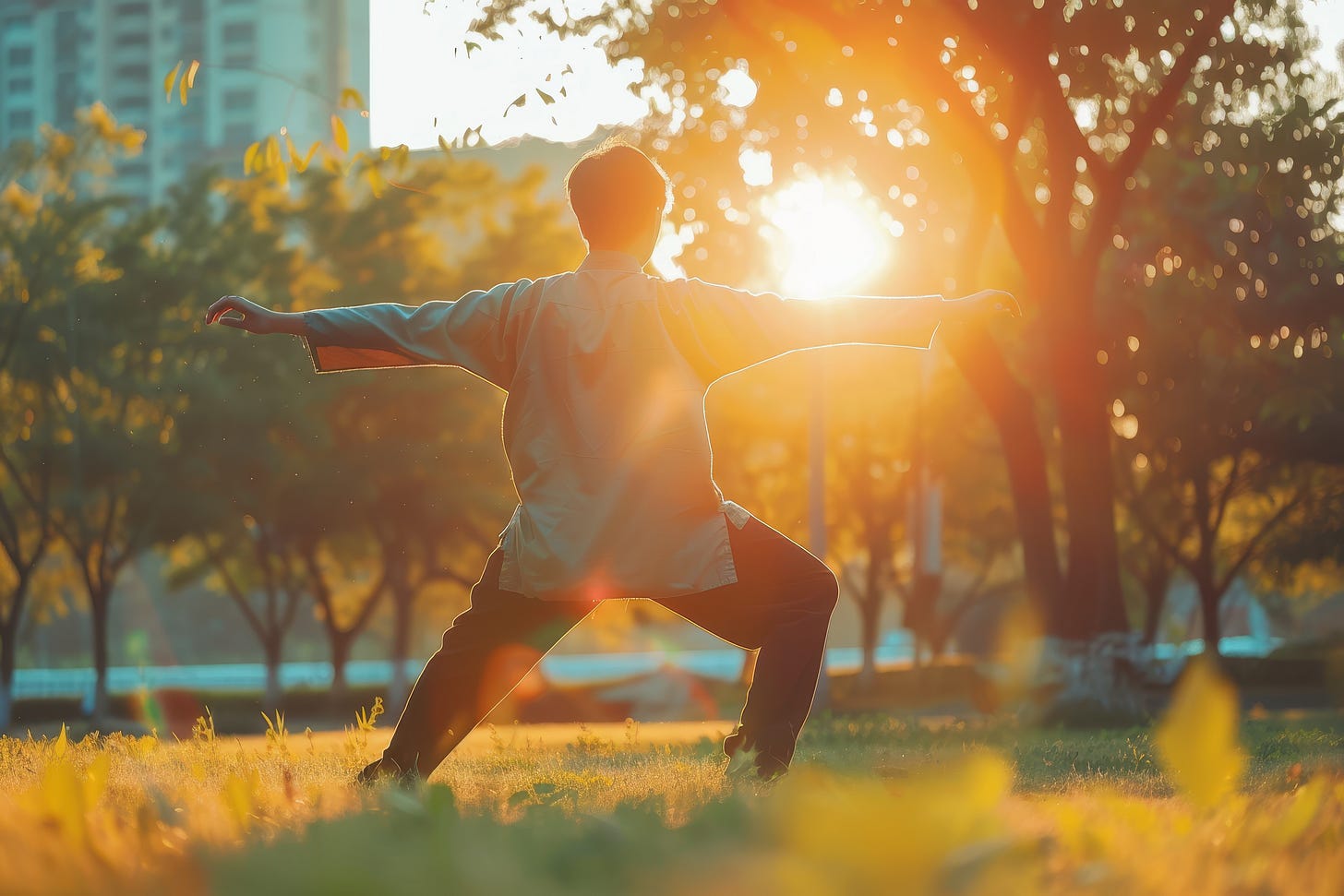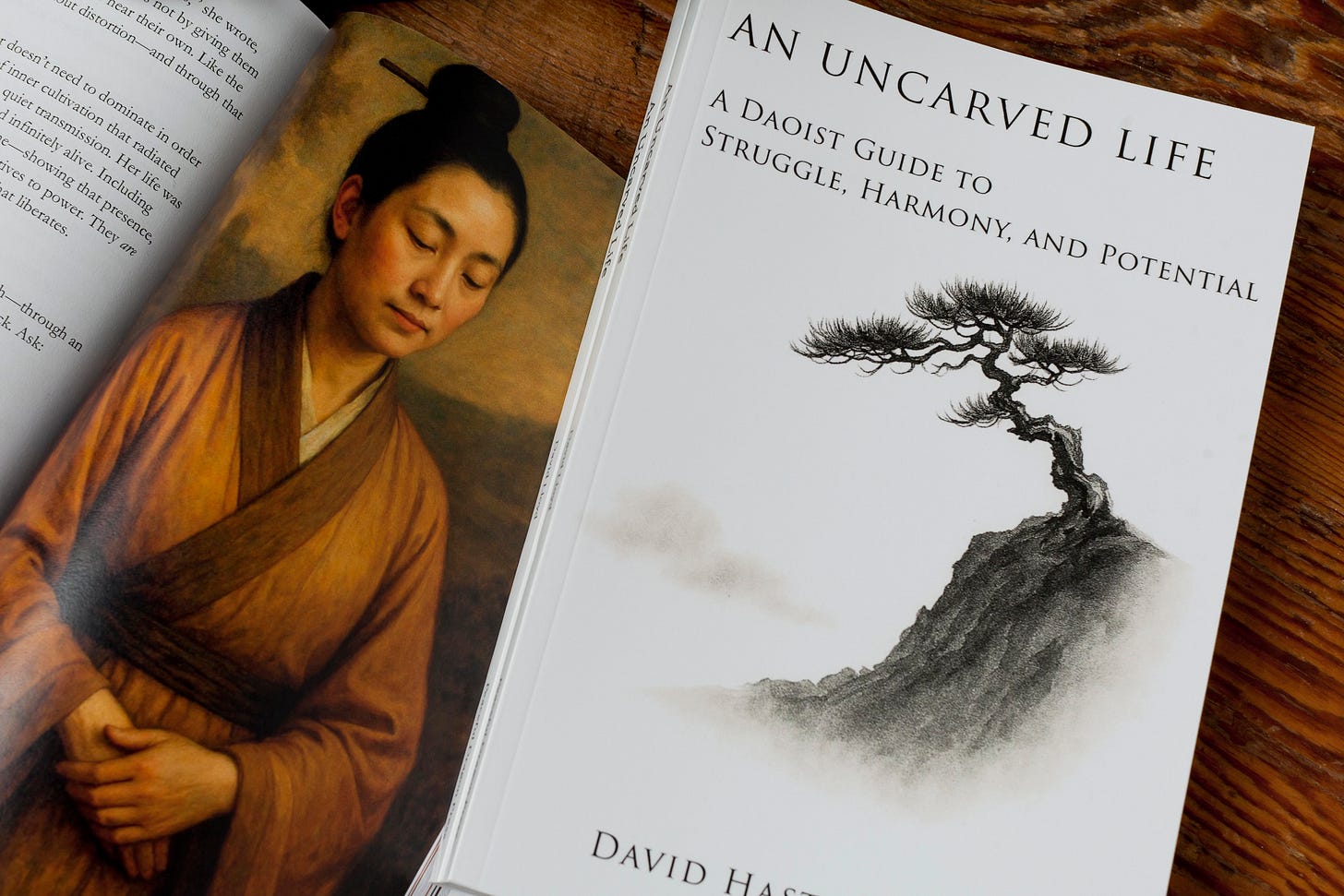Peer-Reviewed Research: How Qigong and Tai Chi Support Emotional Well-Being
When life feels overwhelming, many of us instinctively search for ways to slow down and regain balance. For centuries, people in China have turned to two ancient practices—Qigong and Tai Chi—as methods of self-cultivation and healing. These aren’t simply exercises in the usual sense. They blend gentle movement, rhythmic breathing, focused attention, and meditation into a seamless practice. In recent decades, researchers have begun to ask: can these traditional arts truly regulate mood and ease conditions like anxiety and depression?
A team of scholars led by Albert Yeung and colleagues (2018) reviewed the evidence and explored the mechanisms behind these practices. Their findings suggest that Qigong and Tai Chi may offer powerful, accessible tools for emotional balance.
What Are Qigong and Tai Chi?
Qigong literally means “energy cultivation.” The practice comes in many forms, from still meditations to flowing sequences of movement. It emerged from Confucian, Buddhist, Daoist, martial, and medical traditions, each emphasizing different goals such as morality, enlightenment, strength, or healing. At its core, Qigong is about cultivating and balancing Qi, the vital life energy described in Traditional Chinese Medicine (TCM).
Tai Chi, often seen as a martial art, is more choreographed. Its slow, deliberate movements are designed to harness internal energy and maintain calm even under stress. While martial in origin, modern Tai Chi is widely practiced as a health-promoting activity.
Both practices fall into a category scientists now call meditative movement—activities where body, breath, and mind unite to create relaxation and awareness.
Why Researchers Are Paying Attention
In the West, the popularity of mind-body practices has exploded. A 2017 survey estimated that over 131 million Americans engaged in at least one such practice—including yoga, Tai Chi, or Qigong—in a single year. With this widespread interest, scientists have been asking whether these practices provide measurable benefits beyond the anecdotal claims of practitioners.
Mood disorders, including anxiety and depression, affect millions worldwide. They not only cause personal suffering but also burden healthcare systems. Because conventional treatments like medication and psychotherapy don’t work for everyone, complementary approaches are urgently needed. This is where Qigong and Tai Chi enter the conversation.
How Do These Practices Work?
The exact mechanisms remain a puzzle, but researchers have proposed several overlapping explanations.
1. Mindfulness and Emotional Distance
Both Qigong and Tai Chi involve sustained attention on the body and breath. This echoes principles of mindfulness—cultivating awareness without judgment. Studies of mindfulness show that such awareness reduces reactivity to negative thoughts and helps people step back from overwhelming emotions. One model calls this “reperceiving”: learning to view thoughts as temporary events rather than absolute truths.
2. Resetting the Stress Response
Chronic stress activates the hypothalamus-pituitary-adrenal (HPA) axis, flooding the body with cortisol and adrenaline. This “fight or flight” response, when persistent, leads to anxiety, insomnia, high blood pressure, and other health issues. Slow, rhythmic movement combined with deep breathing appears to tip the balance back toward the parasympathetic nervous system, sometimes called the “rest and digest” mode. This shift reduces tension and promotes calm.
3. Effects on the Brain
Neuroimaging studies suggest meditation and meditative movement can reshape key brain regions. The prefrontal cortex, which governs decision-making and emotional regulation, often shows increased activity. Meanwhile, stress-related enlargement of the amygdala (the brain’s fear center) can diminish with regular practice. These brain-level changes may explain why practitioners report improved emotional stability.
4. Breath and Physiology
Slow breathing alone can alter the nervous system. Studies show that reducing breathing rate to around 10 breaths per minute lowers blood pressure and heart rate while improving heart–lung coherence. In Qigong and Tai Chi, such breathing is naturally embedded in the movements, amplifying relaxation.
5. Cellular and Genetic Effects
Remarkably, even at the cellular level, these practices leave fingerprints. One study of meditation found changes in gene expression related to energy metabolism, inflammation, and even telomere maintenance (linked to aging). Yeung and colleagues note that Qigong and Tai Chi may similarly foster “mitochondrial resiliency,” helping cells cope better with stress.
What the Evidence Shows
The review examined dozens of clinical studies and systematic reviews. The results are encouraging, though not uniform.
Qigong
Multiple trials suggest Qigong significantly reduces depressive symptoms, sometimes with effects comparable to cognitive-behavioral therapy.
It has shown benefits for patients with chronic conditions like diabetes, hypertension, Parkinson’s disease, and chronic fatigue syndrome, often improving sleep, fatigue, and overall quality of life alongside mood.
Evidence for anxiety is more mixed. Some studies found improvements, while others showed no significant effect compared with standard exercise.
Biological markers also shift: reduced cortisol, increased melatonin, stronger immune cell activity, and even enhanced telomerase activity (linked to longevity).
Tai Chi
Clinical trials show Tai Chi reduces depression in people with fibromyalgia, osteoarthritis, and rheumatoid arthritis.
Meta-analyses suggest Tai Chi also helps with anxiety, stress, and mood disturbances.
However, comparisons between Qigong and Tai Chi are complex. Some reviews suggest Qigong may have stronger effects on depression, while Tai Chi shows broader benefits across different populations.
Overall Conclusion
Both practices appear safe, adaptable, and beneficial for emotional well-being. As Yeung et al. note, “Preliminary evidence suggests that Qigong and Tai Chi may be potentially beneficial for management of depressive and anxiety symptoms in healthy adults and patients with chronic illnesses.”yeung-et-al-2018-qigong-and-tai…
Real-World Relevance
The most compelling feature of Qigong and Tai Chi is their accessibility. Unlike some therapies requiring specialized equipment, facilities, or prescriptions, these practices can be performed almost anywhere—parks, community centers, or at home. They are low-cost, low-risk, and adaptable across ages and fitness levels.
For individuals wary of medications or those experiencing side effects, Qigong and Tai Chi provide a complementary path. For communities, they offer group-based activities that foster connection and reduce isolation—important protective factors for mental health.
It’s also worth noting their cultural dimension. Rooted in Chinese philosophy and traditional medicine, they offer not just exercise but a holistic worldview that emphasizes balance, flow, and harmony. This perspective can itself be therapeutic in a world often marked by speed and fragmentation.
Where the Research Needs to Go
The review highlights some limitations. Many studies to date have small sample sizes, short durations, or inconsistent methods. Measures of depression and anxiety vary widely, making comparisons difficult. More rigorous randomized controlled trials are needed to confirm and refine these findings.
Researchers also call for deeper physiological investigations—looking not just at self-reported mood but at biomarkers, brain imaging, and genetic expression. Such studies could reveal exactly how these ancient practices interface with modern biology.
A Modern Take on Ancient Wisdom
When we watch a group practicing Tai Chi in the park or see someone quietly moving through Qigong forms at dawn, it may look simple—even ordinary. Yet beneath the surface lies a profound interplay of breath, body, and mind. Science is beginning to show that these movements can rewire stress responses, calm the nervous system, and even influence our genes.
For anyone seeking emotional balance, whether battling depression, navigating anxiety, or simply striving for peace in a chaotic world, Qigong and Tai Chi offer more than exercise. They are invitations to move with intention, breathe with awareness, and rediscover harmony within.
Reference
Yeung, A., Chan, J. S. M., Cheung, J. C., & Zou, L. (2018). Qigong and Tai Chi for mood regulation. Focus, 16(1), 40–47. https://doi.org/10.1176/appi.focus.2017004
Like what you read? Keep exploring…
If this post resonated with you, you’ll love my book:
An Uncarved Life: A Daoist Guide to Struggle, Harmony, and Potential
This book blends timeless Daoist wisdom with real-world insight into how we can navigate struggle, cultivate inner peace, and live in alignment with our deeper potential. Drawing from classical texts like the Dao De Jing and integrating modern psychology and neuroscience, An Uncarved Life offers a grounded, poetic, and deeply personal guide to living well in a chaotic world.
Whether you’re seeking clarity, calm, or a more meaningful path forward, this book is a companion for anyone who wants to walk the Way with sincerity and strength.
Available now in print, Kindle, and audiobook formats.
Click here to get your copy on Amazon



